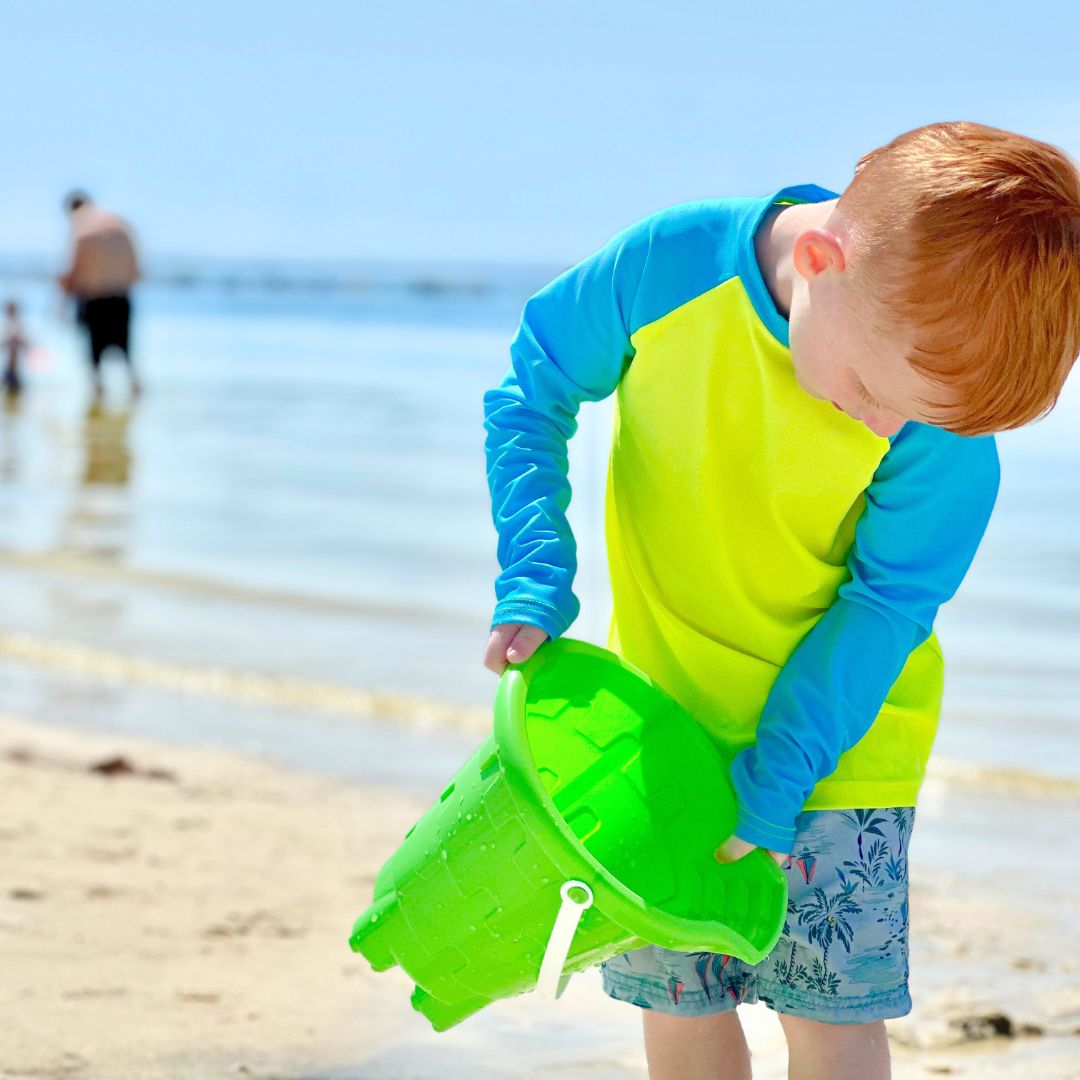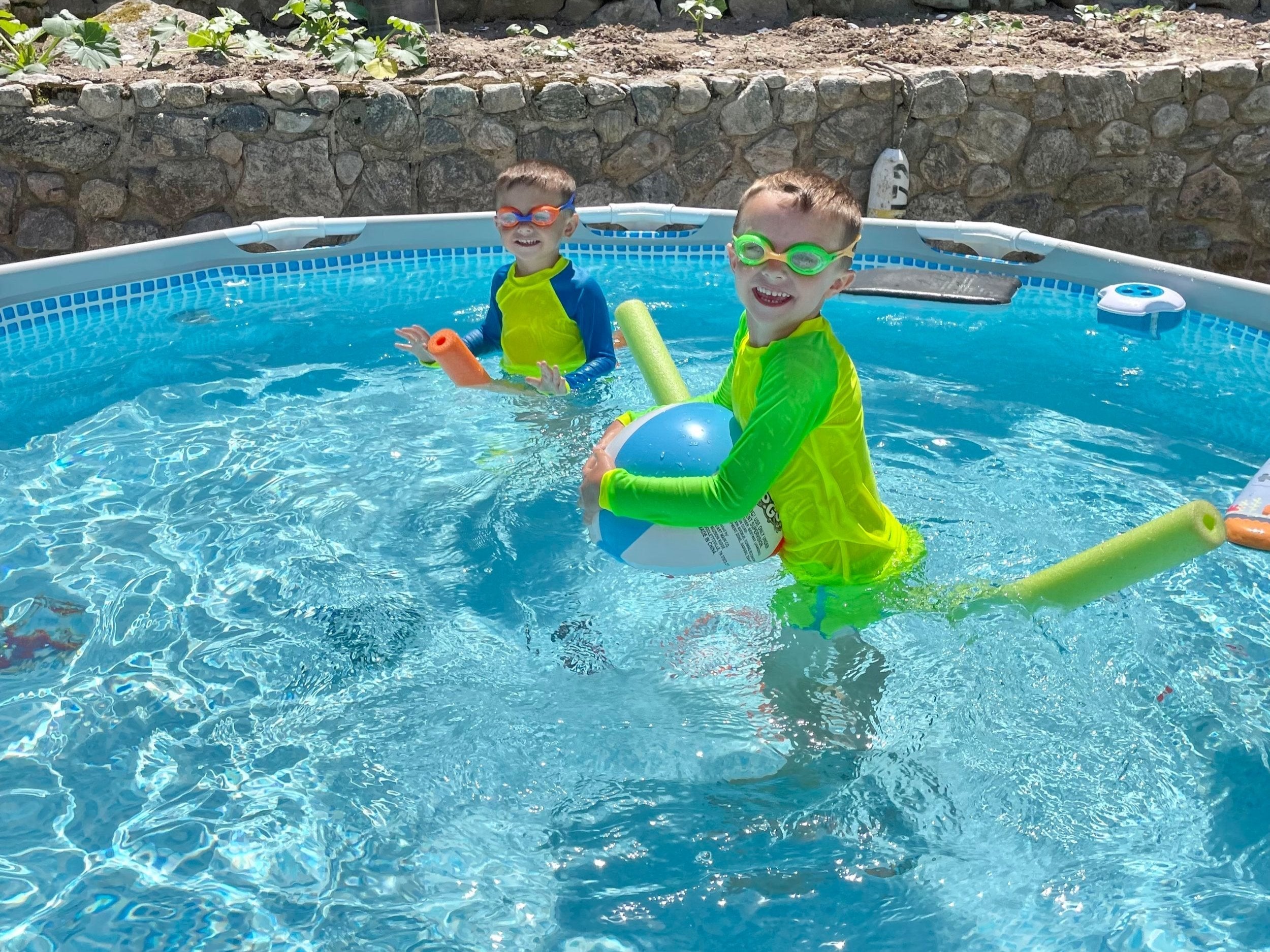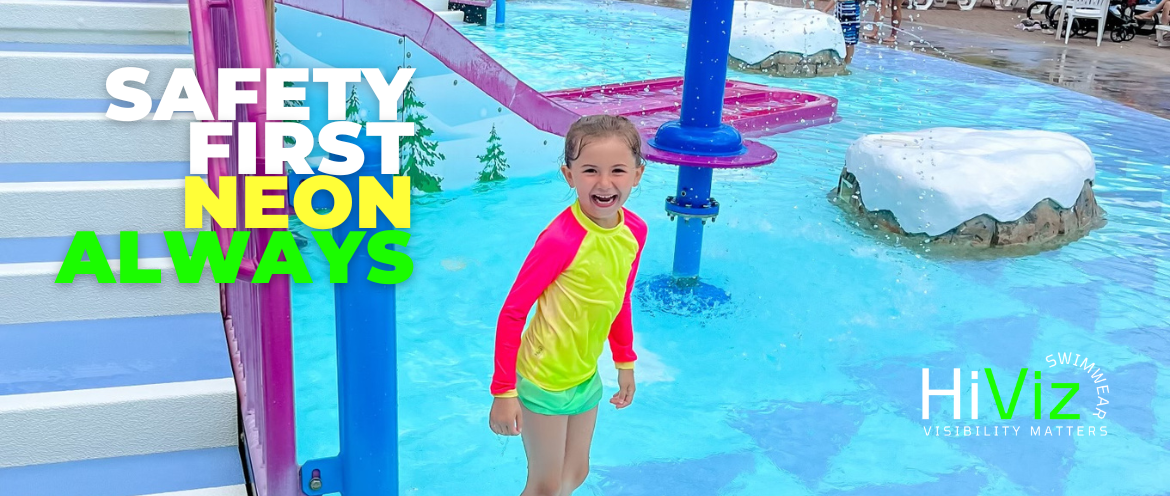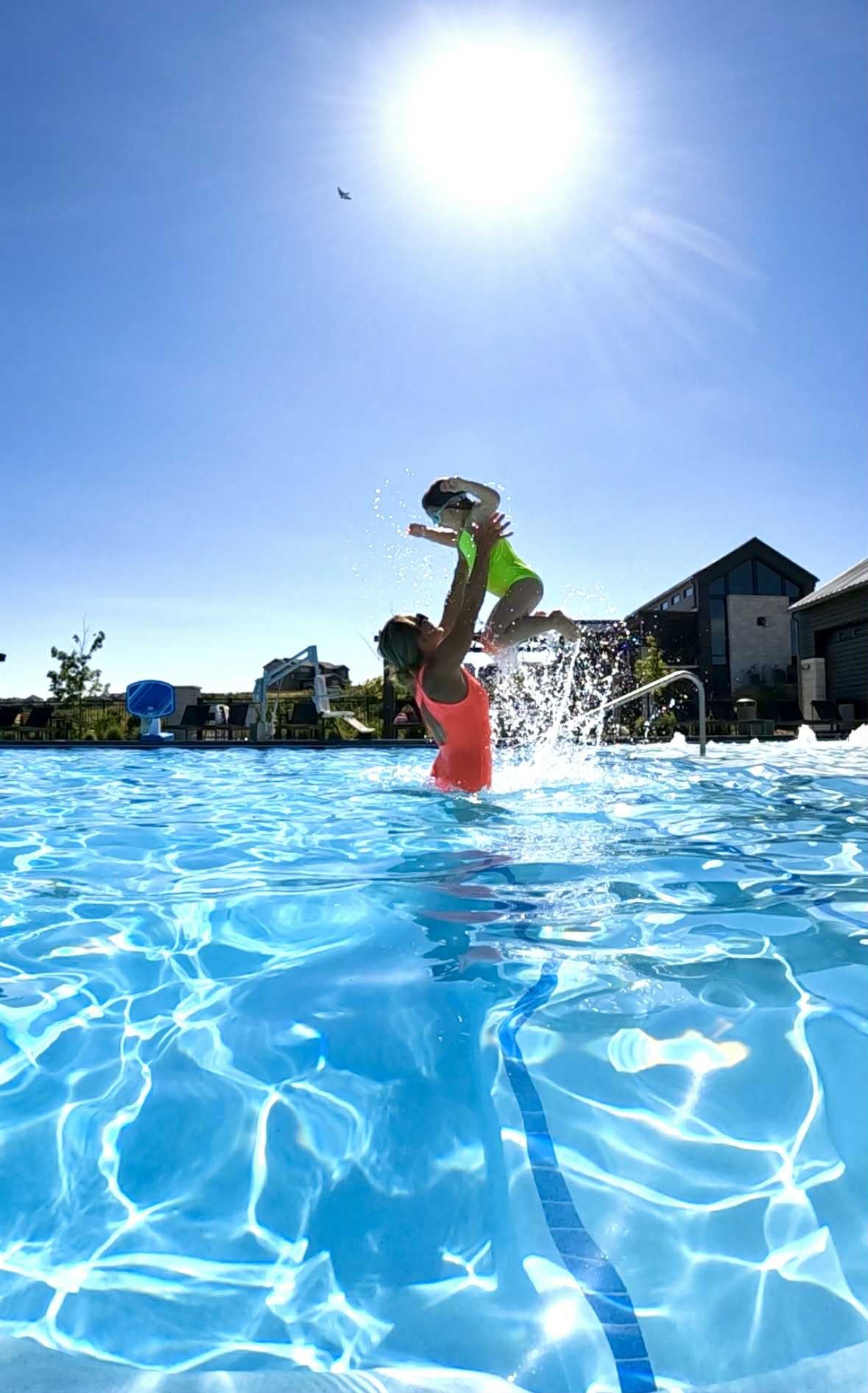In honor of National Skin Cancer Awareness Month, I want to shed light on the aspects that impact UV radiation and skin health and safety. As Summer approaches, the UV index ratings are increasing which means the suns UV rays hitting the earth are intensifying and the risk of skin damage increases. It’s time to refresh your sunblock stash, break out the sun hats and UV protective clothing, like our maximum UPF rated neon kid's rash guard.
What is UV radiation?
UV (ultraviolet) radiation is a type of energy that comes from the sun. It's invisible to the naked eye but has some important effects.
When our skin is exposed to UV radiation, it can cause sunburn, skin aging, and even increase the risk of skin cancer.
There are three types of UV radiation:
-
UVA: This is the type that causes skin aging.
-
UVB: This is what causes sunburn.
-
UVC: It's the most dangerous, but luckily, it's mostly absorbed by the Earth's ozone layer and doesn't reach us.
So, when you hear about protecting yourself from the sun, it's often about shielding yourself from these harmful UV rays.
What is the UV Index?
UV Index is a measure of the strength of UV radiation from the sun at a particular place and time. In simpler terms, it's a way of measuring how easily you could get sunburned or have other skin damage from the sun.
The UV Index scale typically ranges from 0 to 11+:
-
UV Index 0-2: Low risk, you might not need much protection.
-
UV Index 3-5: Moderate risk, you should wear sunscreen and maybe a hat.
-
UV Index 6-7: High risk, you need to be extra careful, wear sunscreen, a hat, and sunglasses.
-
UV Index 8-10: Very high risk, you should seek shade and avoid being outside during peak sun hours if possible.
-
UV Index 11+: Extreme risk, you're at high risk of sunburn and other skin damage, so it's best to stay indoors or under shade.
So, the higher the UV index, the stronger the sun's rays, and the more precautions you should take to protect your skin such as sunblock, and sun protective clothing; wide brim sun hats, sun protective shirts, sun protective swimwear such as long-sleeved rash guards with the maximum UPF rating of 50+.
What impacts the UV Index?
Temperature itself does not directly impact the UV index, but here are the factors that do:
Angle of the Sun: when the sun is higher in the sky, the UV rays have less atmosphere to travel through, resulting in increased levels of UV radiation.
Ozone concentration in the atmosphere: ozone absorbs much of the sun’s harmful UV radiation. The ozone layer is thinner in the Spring and Summer which allows more UV radiation to penetrate and reach the surface of the Earth.
Latitude: As you get closer to the equator, the intensity of UV radiation increases and remains high regardless of the season
Altitude:
-
As the altitude increases the air thins, which means there’s less air to absorb and scatter the UV radiation.
-
At higher altitudes, you’re also closer to the sun; sun rays have a shorter distance to travel and less opportunity to be absorbed or scattered by the atmosphere.
Cloud Cover: Clouds absorb and diffuse UV radiation. Thick clouds can significantly reduce the amount of UV rays that reach the earth’s surface by blocking and scattering the light. However, clouds can also reflect UV radiation back toward the Earth’s surface increasing UV exposure on surfaces like snow and water.
UV rays can still penetrate clouds to some extent, and sunburns can occur even on cloudy days. It’s important to remain vigilant and wear those protective layers to prevent skin damage.
Why is UV protection important?
Ultraviolet (UV) radiation can directly damage the DNA in our skin cells. This damage is what can cause our skin cells to grow uncontrollably, potentially leading to skin cancer.
There are various skin problems that can occur when our skin has prolonged sun exposure:
-
Sunburns: When UV radiation damages the outer layers of the skin causing inflammation, redness, and pain - sometimes blistering.
-
Premature Aging: UV radiation accelerates the aging process of skin, leading to wrinkles, fine lines, sagging, or even skin tone issues.
-
Weakened Immune Response: UV radiation can suppress the immune system in the skin, making it less able to repair damaged cells and more vulnerable to infection.
-
Skin Cancer: Prolonged exposure to UV increases the risk of developing skin cancers such as basal cell carcinoma, melanoma, and squamous cell carcinoma.
Overall, the damaging effects of UV radiation on the skin highlight the importance of protecting ourselves from excessive sun exposure through measures such as wearing sunscreen, sun protective clothing and UV swimwear, and seeking shade when outdoors for extended periods.
At what UV index do you tan or sunburn?
Tanning and sunburns can occur at any UV index, but sunburns becomes more likely and severe as the UV index increases. Generally, a UV index of 3 or higher indicates an increased risk of tanning or sunburn, with higher UV index values indicating even greater risk. It's essential to take precautions to protect your skin whenever the UV index is moderate to high, typically between 3 and 11+.
In general, at a UV index of 1, it might take longer exposure compared to higher UV index values for sunburn to occur. It's still essential to your skins safety to take precautions such as wearing sunscreen, sun-safe swimwear, sun protective clothing, and seeking shade during peak sun hours, even at lower UV index levels.
How many sunburns increase your risk of cancer? One.
The more you burn, the greater your risk of skin cancer.
Studies have shown that experiencing a single servere sunburn significantly increases your risk of developing skin cancer over time. Repeated sunburns, especially during childhood and adolescence, can further elevate your risk of developing skin cancer later in life. The exact increase in risk can vary depending on factors such as your skin type, the severity of the sunburn, and your overall sun exposure history.
It's essential to take preventive measures to protect your skin from the UV rays. Our HiViz neon rash guards, our long-sleeve sun and swim shirt for kids, provides the maximum UPF rating for your little’s skin and piece of mind that your child’s torso and arms will be safe from sunburn (due to missing spots while sunblocking or other factors that make sunblock ineffective). Pair it with a wide-brimmed hat, sunblock on those exposed areas, and our matching bikini bottoms or a pair of swim trunks and they’re ready for a funfilled day in the sun!

HiViz Neon Swimwear for Kids ages 12mo-12yrs
Measures you can take to decrease risk of skin damage:
Sunblock
- Chemical Filters: Some sunscreens contains chemicals (avobenzone, octocrylene, and oxybenzone) that absorb UV radiation and convert it to harmless heat, preventing UV from penetrating the skin.
- Physical Blockers: Others contain physical blockers like zinc oxide or titanium dioxide. These minerals act as a physical barrier to reflect and scatter the UV rays. They work immediately upon application and protect against UVA and UVB rays, these are considered broad spectrum sunscreens.
- SPF (Sun Protection Factor): Sunscreens are labeled with an SPF rating, which indicates their effectiveness of blocking UVB rays. The greater the SPF, the better the protection. SPF does NOT protect against UVA rays, but a broad spectrum sunscreen protects against UVA and UVB.
- Reapplication: For sunblock to be effective, you must reapply often, especially after sweating, swimming, and toweling off.
Seek Shade
- Limit direct exposure to direct sunlight with umbrellas, tree cover, awnings, tents when outdoors, especially during peak UV hours (10AM-4PM).
UPF, Sun Protective Clothing
- Sun-safe swimwear: UV protection swimwear acts a physical barrier between the skin and the sun. The more coverage, the better! However, not all fabric is made equal. Look for UPF swimwear with a rating of 50+, for maximum protection. Sun protective swimwear is the most effective measure to preventing sunburns while enjoying water activities.
- Sun-shirts for kids: long-sleeve UV protective rash guards or sun-shirts are effective at keeping the arms and torso from harmful exposure.
- Wide-brimed sun hats provide protection of the head and neck from the sun and are also effective at keeping you cooler.
- Sunglasses block UV rays from the sun’s harmful rays.
Check the UV Index
- Before heading outside, take extra precaution on days when UV levels are high. Check out the EPA’s app for UV Index.
Educate Yourself & Children
- Learn about the dangers of UV radiation and importance of sun protection to make informed decisions about sun exposure.
HiViz neon rash guards are made in highly visible, bright, true neon colors—the best swimsuit color for visibility. Ensuring your child's safety by the water has never been easier. Our HiViz Neon Rash Guard, boasting a UPF 50+, is the epitome of superior sun protection and heightened visibility. The neon rash guard is available in neon yellow and offers three distinct arm color options: neon yellow rashguard sleeves, neon pink rash guard sleeves, and blue rash guard sleeves.
- UPF 50+ - maximum sun protective rating achievable for fabric, blocking 98% of the sun's harmful rays
- Chlorine resistant
- Comfortable, 4-way stretch
- Designed in Maine, Made in the USA with imported fabric
- Made with OEKO-TEX Standard 100 Certified Fabric
- 82% REPREVE® recycled polyester, 18% spandex







UV Protective Clothing prevents sun damage!
My biggest fear when putting sunscreen on my kids is missing a spot, or five; that’s exactly why I put my kids in sun protective clothing whenever possible.
Sun protective clothing offers an effective and convenient way to protect your skin from UV radiation, reducing the risk of sunburn, premature aging, and skin cancer. When combined with other sun protection measures such as sunscreen, sunglasses, and seeking shade, sun protective clothing can help you enjoy the outdoors safely.
I wouldn’t be caught without having my children in a high-visibility (hivis or hiviz) neon long-sleeve rash guard at a beach, pool, or splashpad outting. They offer the highest UPF; quick dry, lightweight comfort; and safety through visibility with our bright neons.
Neons are the only colors that sustain visibility when submerged in water AND provide extra protection against UV radiation.
Curious why?
Neon colors often have high visibility due to their ability to reflect visible light. This high visibility indicates that a significant portion of the light, including UV radiation, is being reflected away from the fabric rather than absorbed. Unlike traditional spectrum colors, neon colors absorb invisible ultraviolet light and then emit a visible glow. This is why neons fluoresce under water while other colors dim.
As a result, our neon-colored rash guards can provide better protection against UV radiation and added safety through visibility when your littles are playing in and around water.
If a successful and sunburn free Summer is your goal, be sure to pack your HiViz neon children’s rash guards and bottoms, sunblock, hats, and sunglasses. Stay alert of the UV index where you’re planning to be outdoors and take proper UV protective measures. Check out the EPA’s app for UV Index.







